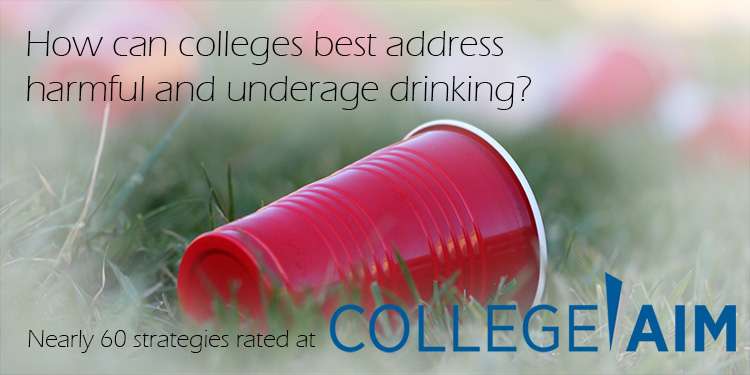NIH releases comprehensive resource to help address college drinking

CollegeAIM, a new resource to help college officials address harmful and underage student drinking, is now available. The CollegeAIM (Alcohol Intervention Matrix) guide and website was developed by the National Institute on Alcohol Abuse and Alcoholism, part of the National Institutes of Health.
The centerpiece of CollegeAIM is a comprehensive and easy-to-use matrix-based tool that will help inform college staff about alcohol interventions and guide college staff to evidence-based interventions. CollegeAIM is the result of a multi-year collaboration and an extensive review of the scientific literature. It is unique in the breadth of research covered by its analysis, and the number and expertise of its contributors.
"Despite our collective efforts to address it, high-risk drinking remains a significant and persistent problem on U.S. campuses," said George Koob, Ph.D., NIAAA director. "While college officials have numerous options for alcohol interventions, they are not all equally effective. CollegeAIM can help schools choose wisely among available strategies, boosting their chances for success and helping them improve the health and safety of their students."
CollegeAIM compares and rates nearly 60 types of interventions on effectiveness, anticipated costs and barriers to implementation, and other factors. Interventions are classified as either environmental-level strategies or individual-level strategies. Environmental-level strategies target the campus community and student population as a whole; while individual-level strategies focus on individual students, including those in higher risk groups such as first-year students, student-athletes, and members of Greek organizations. With CollegeAIM, school officials can learn how their current strategies compare to other evidence-based alternatives; discover possible new strategies to consider; and select a combination of approaches that best meets the particular needs of their students and campus.
The top tier of CollegeAIM - higher effectiveness - includes eight individual and five environmental strategies. In general, they represent a range of counseling options and policies related to sales and access.
"This new matrix-based instrument is one of the most thoroughly vetted and user-friendly summaries of intervention strategies I have seen in decades," said Jonathan Gibralter, Ph.D., president of Wells College in Aurora, New York, and chair of the NIAAA College Presidents Working Group to Address Harmful and Underage Drinking.
"There is a pressing need for a clear, unbiased tool to help colleges make informed decisions," Dr. Gibralter said. "College administrators are in a critical position - to serve as catalysts to influence a school's social atmosphere and make choices that improve the health and safety of students. And we believe the CollegeAIM guide and website will help."
Underage drinking, as well as harmful drinking among students of legal drinking age, continues to be a major problem on U.S. campuses. Researchers estimate that each year 696,000 college students are assaulted by another student who has been drinking, 97,000 students report experiencing alcohol-related sexual assault or date rape and 1,825 students die from alcohol-related injuries.















